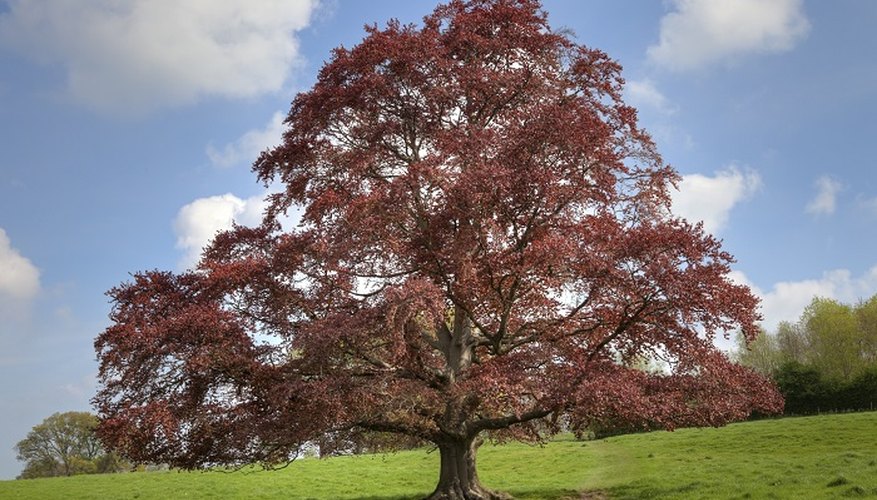The copper beech tree is another name for the European beech. It get its name because of the copper colouring of the leaves in the autumn. Copper beech is a tall tree that can reach heights of more than 30 metres (100 feet), although most achieve heights of around 15 metres (50 feet). The trunk and limbs of the copper beech are greyish silver. Although not native to the UK, the copper beech thrives throughout much of the country.
- The copper beech tree is another name for the European beech.
Check the location where the copper beech tree is planted to ensure that it receives full sunlight all day. Although partial sunlight is acceptable, a young tree will fail to thrive in shade. If needed, prune off branches from nearby trees with an extendable pole saw to provide adequate sunlight.
Water the soil under the copper beech tree to an 20 to 25 cm (8 to 10 inch) depth once per week if no rainfall occurs. Starting in the late spring, increase watering to two or three times per week to prevent the soil from drying out. Soggy soil will harm the tree.
- Water the soil under the copper beech tree to an 20 to 25 cm (8 to 10 inch) depth once per week if no rainfall occurs.
Spread mulch around the base of the copper beech until it forms a circular pattern and reaches a 7.5 cm (3 inch) depth. This conserves soil moisture in the summer and protects the shallow surface roots from frost damage in the winter.
Drape a frost blanket over young copper beech trees and secure it loosely with twine when temperatures are expected to dip below 0 degrees C (32F). Remove the frost blanket when temperatures moderate. Frost protection is required only until the beech trees are two to three years old.
Prune the copper beech tree in the winter when it is dormant. Remove dead branches, which appear dark instead of light grey, near the boot. Make the cuts with a pruning saw. Locate and remove any small suckers growing from the side of the trunk, using hand pruners.
